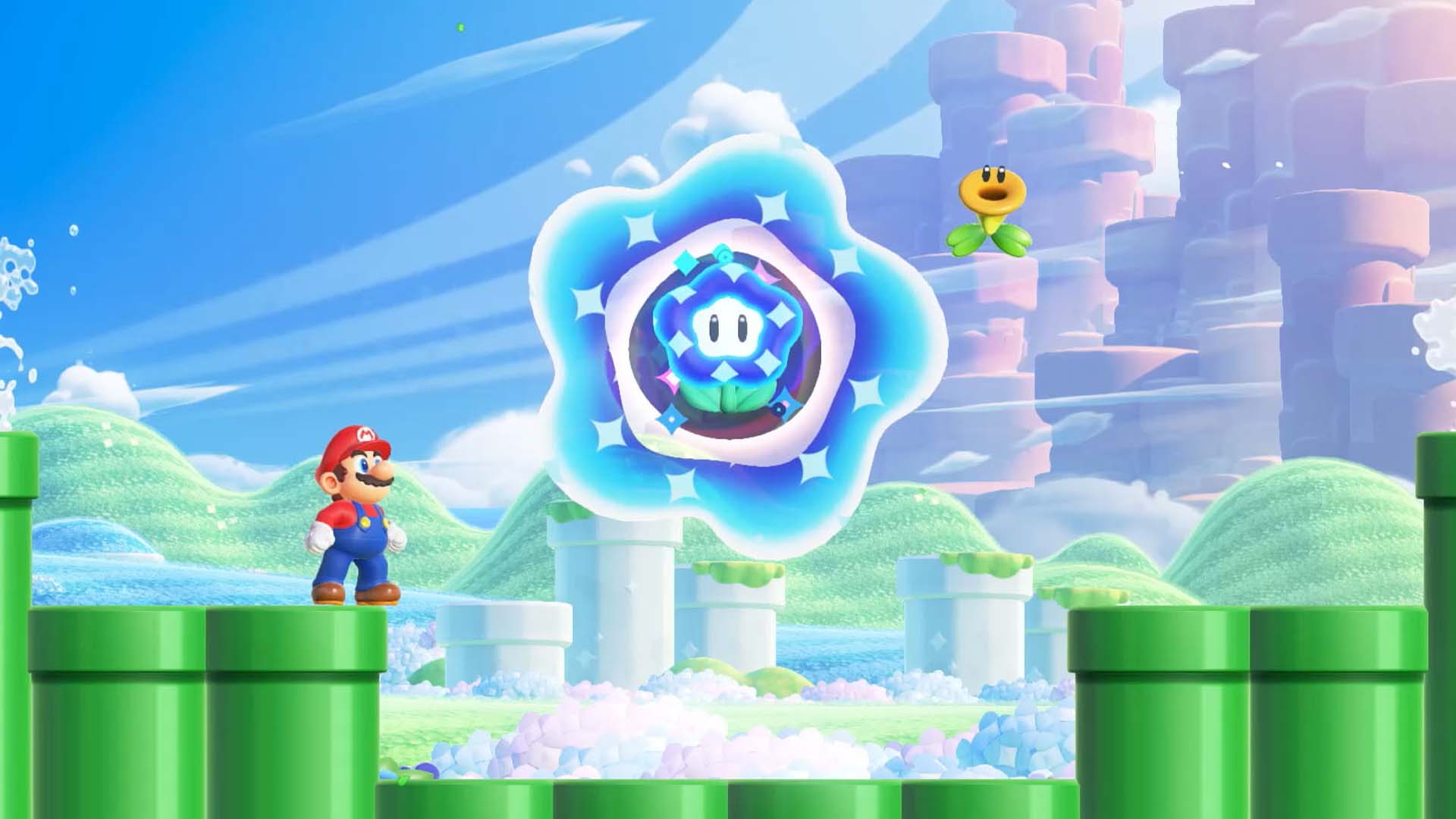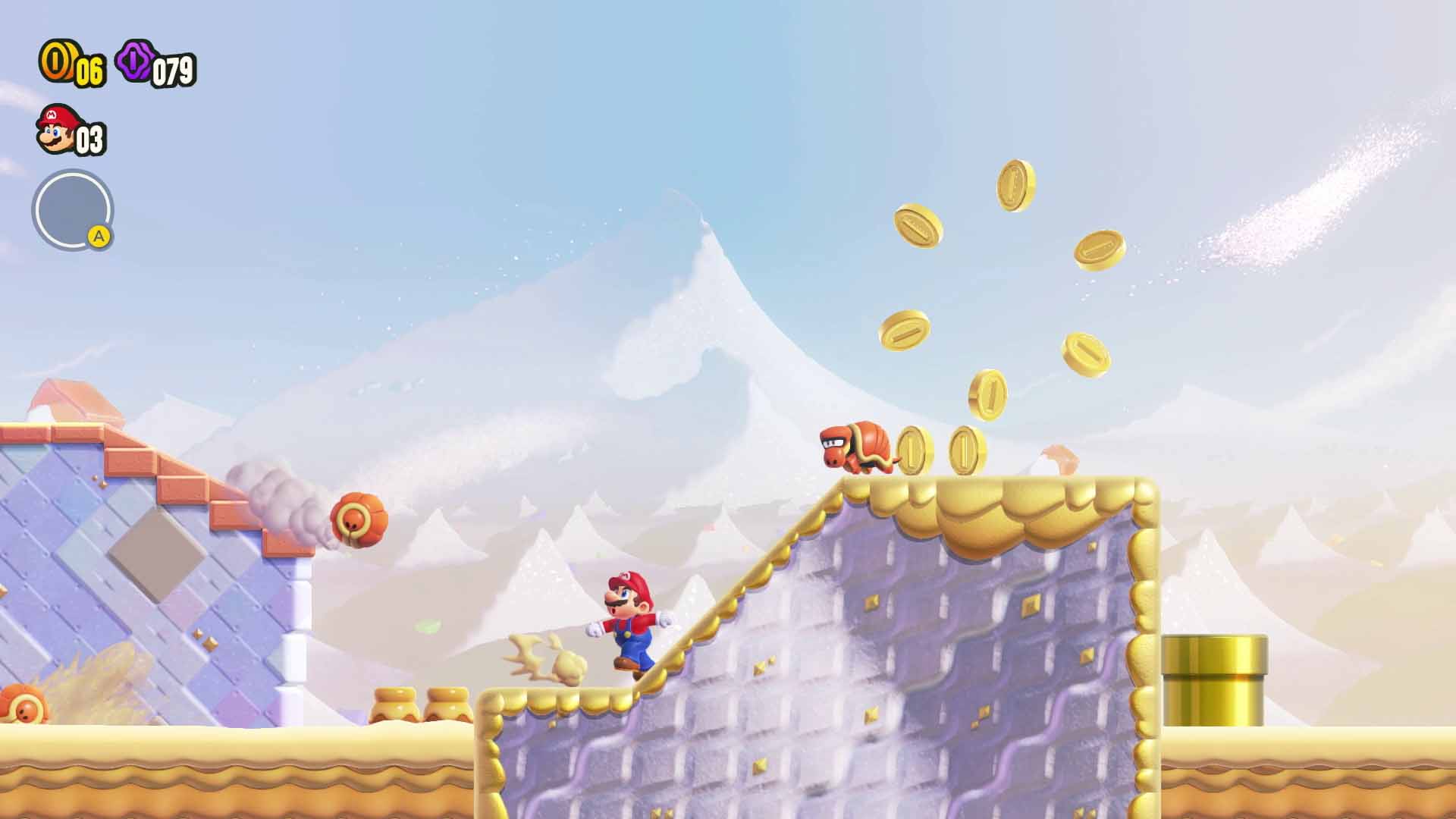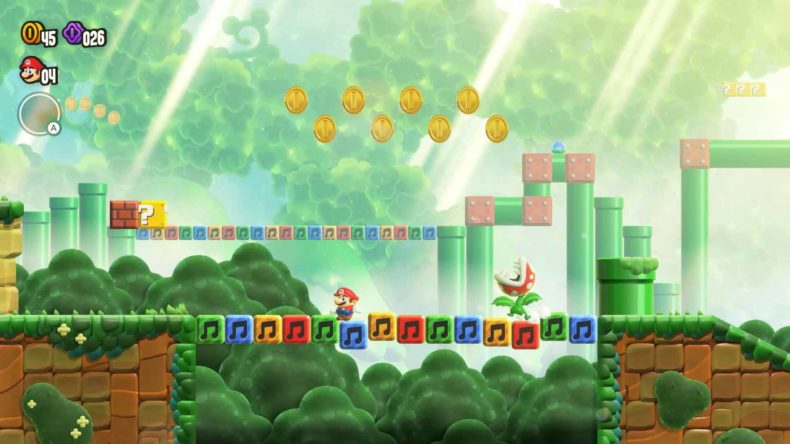It’s been a while since I’ve played something with as much creativity as Super Mario Bros Wonder. Sitting down to play a new platform game such as myself and Sean did a few weeks back at Nintendo HQ, I was faced with the question all games of this ilk give me: does it feel right? Walking away from that session, we both sounded like youngsters again, feverishly talking on the car ride home about how it felt; the genius design, the almost trip-like nature of the Wonder flowers, and how it just felt great. So with that question answered, having played a bit more of it now, was it lightning in a bottle, or does that magic sustain itself? Well, in a preview sense, I think that magic is here to stay, and that people are going to be incredibly happy with Wonder.
One thing I have been ruminating about since playing is how you get across just how incredible it feels to play. It’s “another Mario game” to some, sure, but the tightness and responsiveness of the controls feels better than ever before. Perhaps it’s the massive, sweeping changes to the audio of the universe that help it feel so fresh and new, because everything feels musical now. As Mario (or Peach, Yoshi, Luigi, or whoever you choose) descends into a ground pound, a drum roll starts and it finishes just as bum hits ground with a snare hit. Every time you jump, it’s a nylon stringed acoustic making that familiar jump sound. It feels oddly modern for such a long running series, but Wonder is anything but safe.

The badge system, for example, is a massive change. One such badge, “Floating High Jump” essentially turns whoever you’re playing as into old-school Luigi, with a fluttering, floaty jump. I couldn’t get on with it, because I was playing as Mario, and it felt wrong. “Wall-Climb Kick” adds a vertical wall jump, allowing you to hit a wall, ping upwards, then still retain your diagonal wall jump afterwards. So much of the badge system feels like it could create an entire plethora of sub-categories for speed-runners, but this creative system is matched by level design, because with all the options available, it only comes together if you need those mechanics and ideas, and make them worthwhile, which Wonder seems to do with ease.
“Jewel-Block Cave” is an early level that shows off the new Drill-head power-up. Jumping around and smashing jewel-blocks is all well and good, but it’s when you spy a coin that seems inaccessible that you start to feel your brain-cogs whirring, and suddenly you realise the level is designed to teach you how to use that new power-up. “Bulrush Coming Through!” is a level all about the Wonder Flower, giving you an early idea about how much maps can change just by picking up one of these collectibles. Suddenly you’re riding the back of multiple Bulrush animals, and everything feels different.

It’s perhaps easy to suggest that the “Wonder-elements” are where all the creativity lies. But it’s simply not the case. The levels are different now. Yes, it still seems like a 2D Mario game, but removing the timer means you can explore without rushing. Moreover, it feels like it’s given Nintendo the opportunity to hide things everywhere. It almost makes you lose trust in what you see and know, because even in the first level, “Welcome to the Flower Kingdom!” you are taught very early that secrets are everywhere. Shorter levels like “Break Time! Trottin’ Piranha Plants” feel like the company showing off, offering a showcase of colour and sound, while nodding to the past. There are times where Super Mario Bros Wonder feels like a series reboot based on the levels I’ve played so far.
What this all adds up to is a feeling of wanting more. It’s hard to put the controller down because you’re just wondering what the next Wonder Flower idea will be. Just how will this new badge I’ve unlocked interact with the next level, or even levels I’ve played before. And there’s that boundless creativity again that Switch-era Nintendo has revelled in. As Sean said in his preview, there are so many ideas in just a handful of stages, that you wonder how Nintendo gets away with it. Like Odyssey, ideas are introduced and reused sparingly. While other companies would make entire games out of mechanics, Super Mario Bros Wonder introduces them, then adds more to the mixture of creativity and, yes, wonder. It’s smart that things like ground-pound cancels and shell-jumps are still doable, because it means there’s enough old mixed in with the new so far, that I am very, very excited to play more.
Super Mario Bros Wonder comes to Nintendo Switch on October 20th.





